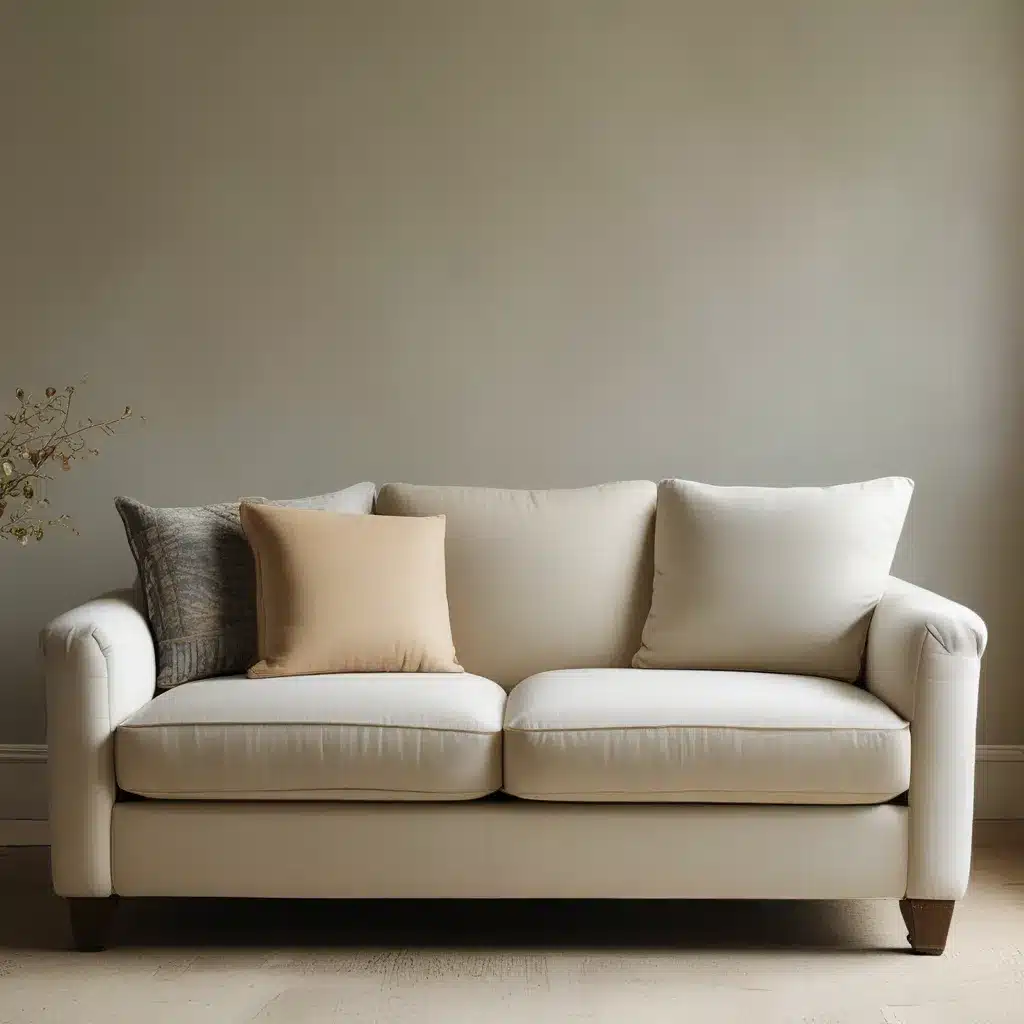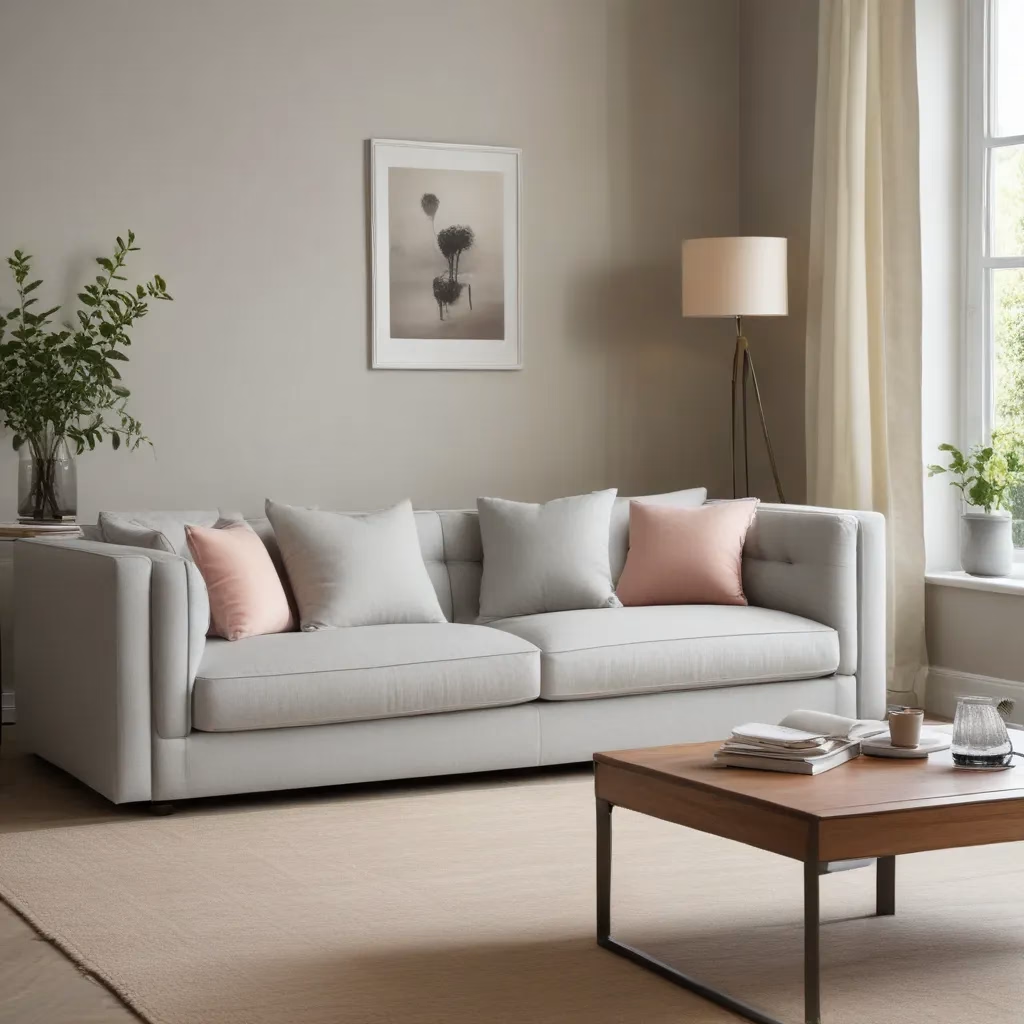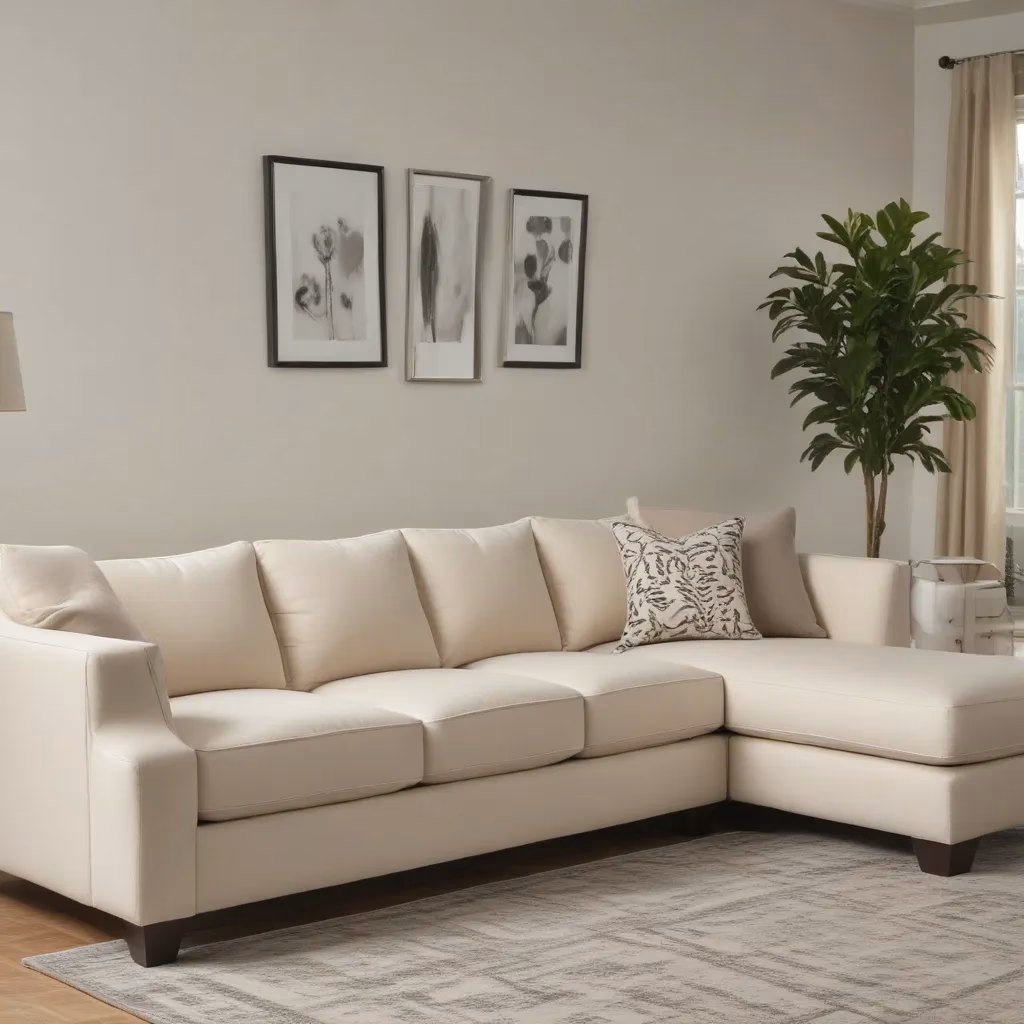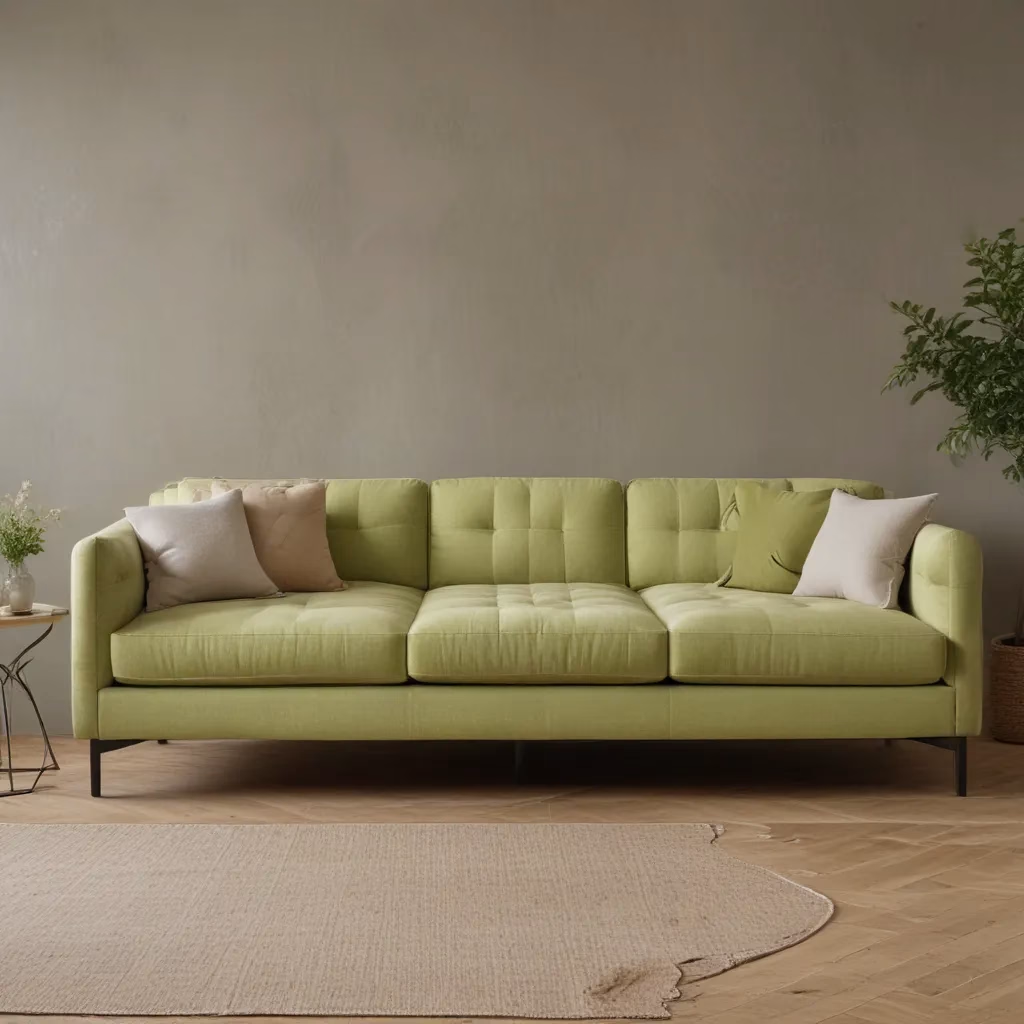Unveiling Your Dream Sofa: A Custom-Crafted Delight
I still remember the day I moved into my first real home – no more tiny studio apartment, but a spacious condo filled with potential. As I gazed around at the empty rooms, one thought kept nagging at me: “What am I going to do about furniture?”
Scouring the internet and local stores, I found myself overwhelmed by the sheer variety of sofas, each one more enticing than the last. But the prices? Yikes. Anywhere from £600 to £2000, and the styles I truly adored always seemed to cost a pretty penny – upwards of £1000 or more.
That’s when inspiration struck. “Why not make my own sofa?” I thought. After all, how hard could it be? As I delved into research, however, I quickly realized that quality sofa-making is a bit of a lost art. Resources on the process were few and far between, and the intricate details of construction and design were largely shrouded in mystery.
Well, I’m here to change that. Join me as we peel back the curtain on the world of bespoke sofas, uncovering the tips and tricks that will empower you to create your dream seating oasis. Because when it comes to furnishing your home, why settle for off-the-rack when you can have a one-of-a-kind masterpiece, made just for you?
Understanding the Anatomy of a Sofa
Before we dive into the nitty-gritty of custom sofa creation, it’s important to understand the core components that make up these comfy sanctuaries. There are two main schools of thought when it comes to sofa design: the traditional and the modern.
Traditional sofas, often adorned with ornate carvings and floral patterns, have their cushions and upholstery seamlessly integrated into the frame. The springs are typically tied down to the bottom, creating a more unified structure. While undeniably elegant, these vintage-inspired pieces require a significant amount of specialized upholstery work to construct and maintain.
The modern sofa, on the other hand, takes a more streamlined approach. The cushions and springs are separated, allowing for easy replacement and reupholstering. These designs tend to feature clean lines and a more minimalist aesthetic – the kind of sofa you’d expect to see in a stylish home magazine.
For my project, I opted to go the modern route. Not only does it align better with my personal taste, but it also seemed a bit more approachable for a first-time sofa maker like myself. After all, I’m no upholstery expert, and the thought of intricate tufting and carving was enough to make my head spin.
Choosing the Right Support System
Underneath those plush cushions lies the foundation that provides the ultimate in comfort and longevity. When it comes to sofa support, there are two main options to consider: webbing and springs.
Webbing is the more budget-friendly choice, involving a series of semi-elastic bands woven across the frame. While this method is relatively simple and cost-effective, it’s generally advised to steer clear of webbing if you’re after a truly high-quality, long-lasting sofa. The problem? Over time, those bands can start to sag and lose their tension, leading to an uncomfortable seating experience.
On the other end of the spectrum, we have the illustrious eight-way hand-tied springs. This premium support system features individually coiled springs, meticulously tied together in a criss-cross pattern to create a sturdy, evenly distributed foundation. It’s the secret behind those luxurious, sink-right-in sofas that can cost upwards of £2000. And while the price tag may make your wallet wince, the level of comfort and durability is truly unparalleled.
For my sofa, I opted for a middle ground: webbing. Now, before you start shaking your head at my decision, hear me out. While webbing may not be the Rolls-Royce of support systems, it can still get the job done – especially if the sofa is intended for casual, everyday use, rather than being a high-traffic family gathering spot. Plus, it’s a heck of a lot easier to install than those intricate spring systems.
Of course, if you’ve got little ones who love to bounce around or you just can’t resist the urge to cannonball onto your new seating arrangement, springs might be the way to go. But for my needs, webbing seemed like the practical (and budget-friendly) choice.
Perfecting the Proportions
Now that we’ve covered the foundation, let’s talk about the overall dimensions of a standard sofa. As a general rule of thumb, a three-seater clocks in at around 85 inches long, 35 inches deep, and 35 inches high. But of course, these measurements aren’t set in stone – after all, the beauty of a custom sofa is the ability to tailor it to your specific space and preferences.
One crucial consideration is the seat height. While the industry standard hovers around 18 inches from the floor to the top of the cushion, this can vary anywhere from 13 to 20 inches, depending on your personal comfort level and the overall design aesthetic you’re aiming for. The deeper you go, the more your feet may dangle, so keep that in mind if you’re on the shorter side.
Seat depth is another important factor, with the typical range being 20 to 21 inches from the front of the cushion to the back. And when it comes to the backrest, a height of around 15 inches is considered the norm. But again, feel free to play around with these measurements to achieve the perfect fit for your space and your body.
As for seat incline, most experts recommend a 90 to 100-degree angle at the front for optimal leg comfort, with a 5 to 15-degree recline on the backrest for a more casual, relaxed vibe. But truthfully, if you’re like me and you just want something soft and cozy, you can toss those precise calculations out the window and go with good old right angles – just be sure to compensate with some well-placed, plush throw pillows.
Choosing the Perfect Fabric
With the structural elements taken care of, it’s time to turn our attention to the visual star of the show: the fabric. And let me tell you, the options are enough to make your head spin. From sumptuous velvets to durable microfibers, the world of upholstery textiles is a veritable playground for the design-savvy.
As I scoured the samples, I knew I wanted something soft and inviting, yet also practical enough to withstand the occasional spill or pet paw. Microfiber quickly emerged as the front-runner – not only is it budget-friendly, but it’s also wonderfully stain-resistant and easy to clean. Plus, with its subtle nap and luxurious feel, it perfectly complemented the modern aesthetic I had in mind.
Of course, if you’re after a more opulent look, you can’t go wrong with a plush, performance velvet. These fabrics offer a level of richness and depth that’s truly hard to beat, and the best part? Many of them are now designed to be exceptionally durable and easy to maintain. So whether you opt for a classic neutral or a bold, jewel-toned hue, you can rest assured your sofa will stay looking its best for years to come.
And if you’re feeling particularly adventurous, why not take the bespoke experience one step further and provide your own custom fabric? Many sofa companies, including Sofa Spectacular, offer a “customer’s own material” (COM) option, allowing you to truly create a one-of-a-kind piece that reflects your unique style.
Putting It All Together
Alright, now that we’ve covered the fundamentals, it’s time to dive into the nitty-gritty of actually building your dream sofa. And let me tell you, it’s not as simple as just slapping some wood and fabric together – there’s a whole world of engineering and craftsmanship that goes into creating a truly sturdy, comfortable, and visually stunning piece of furniture.
First things first: the frame. Rather than opting for a basic screw-and-glue approach, I decided to take a page out of the furniture-making playbook and incorporate some good old-fashioned mortise and tenon joinery. Sure, it’s a bit more time-consuming, but the resulting stability and structural integrity are well worth the effort. Plus, there’s just something so satisfying about the precision and skill required to pull off those perfect wooden connections.
For the rest of the frame, I turned to the wonders of pocket screws. Not only do they provide a solid, sturdy foundation, but they also allow me to hide those pesky fasteners from view, ensuring a clean, seamless aesthetic. And when it came time to secure the webbing, I pulled out the trusty staple gun, carefully stretching and weaving those semi-elastic bands to create the supportive base for my cushy cushions.
Speaking of cushions, this is where the real magic happens. After carefully measuring and cutting my microfiber fabric, I enlisted the help of a vacuum seal bag to compress the high-density foam inserts before carefully nestling them into their new cozy homes. It was a bit of a wrestling match, I’ll admit, but the end result? Plush, perfectly fitted cushions that invite you to sink right in and never leave.
The Finishing Touches
With the frame and cushions in place, it was time to turn my attention to the final flourishes that would truly make this sofa shine. First up: a good old-fashioned wood stain. I wanted to achieve that warm, inviting look that would perfectly complement my microfiber fabric, so I carefully brushed on a rich, espresso-colored finish, sealing it with a protective topcoat to ensure a lasting luster.
And no sofa is complete without a few scatter cushions to add that extra touch of coziness and style. I took inspiration from designer Sarah Sherman Samuel’s Sherwood sofa, crafting a trio of throw pillows in coordinating shades of blue that would add the perfect pop of color to my living room.
Finally, I couldn’t resist the opportunity to add a little something extra – a hidden USB port! Because let’s be honest, in this day and age, who doesn’t need a convenient spot to charge their devices while they sink into sofa bliss?
A Labor of Love, A Vision Realized
As I sit back and admire my handiwork, I can’t help but feel a sense of immense pride. Sure, it was a labor-intensive project, filled with its fair share of challenges and learning curves. But the end result? Absolutely worth it.
Not only do I have a stunning, one-of-a-kind sofa that perfectly fits my space and my style, but I also have the satisfaction of knowing that I poured my heart and soul into its creation. And let me tell you, there’s nothing quite like the feeling of sinking into a piece of furniture that you’ve lovingly crafted with your own two hands.
If you’re considering embarking on your own bespoke sofa journey, I say go for it! Sure, it may take a bit more time and effort than simply placing an order online or browsing the showroom. But the end result? A piece of furniture that is truly made just for you, a reflection of your unique vision and personality.
So what are you waiting for? Grab your tools, fire up your creativity, and get ready to unveil your very own custom-crafted sofa masterpiece. Trust me, the journey is half the fun – and the destination? Pure, unparalleled sofa bliss.




